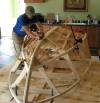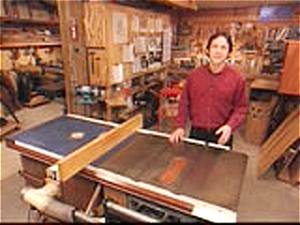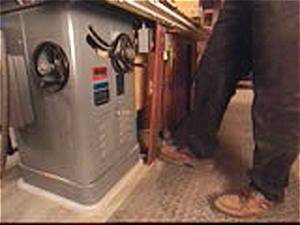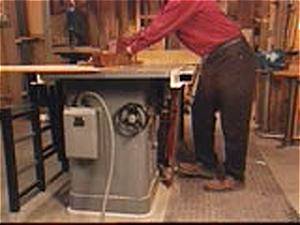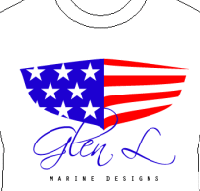

A place to share YOUR boat building story
Glen-L Marine Designs - 9152 Rosecrans Ave. - Bellflower, CA 90706
 In this issue
In this issue
-
"It's Ketch as Ketch
Can"
-
How to Anchor Anywhere
-
Designer's Notebook: Center of
Buoyancy
-
Calendar
-
Bilge Pumps by ArtDeco
-
Photos sent in since the last
WebLetter...
-
One Engine or Two?
-
Shop Talk: (1) The Kick-switch; (2)
Money-saving Tip
-
Innovative Products
-
Recent email
-
Teacher's Day - A True
Story
GLEN-L Update
-
The West Coast Rendezvous of Glen-L
boatbuilders is coming up in just a few days. It's
happening in the Sacramento (California) Delta area, and
we sure hope that everyone who possibly can will take this
opportunity to meet other happy builders of Glen-L boats,
share the excitement and "pick the brains" of
people who have already been where you're going.
Gayle and Buckshot and I will be there, and we'd really like to meet you all in the flesh. I'm sure it will be a grand time!
Bring your boat or your dreams - share the joy!
-
Assembling the WebLetter is something that is done between
other responsibilities and I want to point out that it is
our builders that really make it happen by sharing their
experiences. Take a close look at this WebLetter and it
becomes obvious just how much we depend on YOUR
submissions. You enjoy reading the WebLetter because these
are real stories by builders like you. You
could be in the next WebLetter; our readers want to hear
about your project.
Thanks to the MANY builders who contributed to this WebLetter.
Editor
It's Ketch as Ketch Can...
The 125-mile race from Newport Beach, California to Ensenada, Mexico draws an armada of entries.
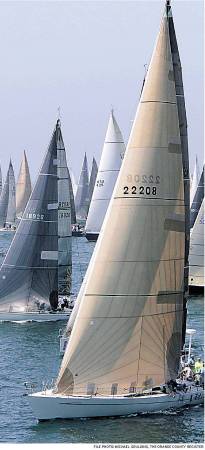 HEADING SOUTH: Yachts leave Newport Harbor on their way to Ensenada, Mexico, at the beginning of last year’s race. One vessel that will join the flotilla this year was bought for $780 on eBay. |
As with all races, the competitive
crew on Doug Baker's sleek Magnitude 80 will be pushing
to be the first to arrive in Ensenada.
Those aboard John Haupt's 36-foot boat bought on eBay
for $780, on the other hand, are just hoping their boat gets
there in one piece.
About 400 boats of all sizes and worth will gather outside
the Newport Harbor at noon Friday to depart on the 125-mile
journey to Ensenada, during the 61st annual event touted as
the "world's largest international yacht
race."
Magnitude 80's navigator Ernie Richau said early
analysis using one forecasting model shows racers are not
likely to break records this year, but there could be a
favorable northwest wind in the afternoon with speeds of 10
to 15 knots.
That could make this one of the better races in years, as
winds have been sluggish enough for sailors to drop fishing
lines in the water during recent competitions.
Baker has been doing the race since 1975. Mag 80 has set two
records this year for races to Mexico and took home first in
class in the last Transpacific Yacht Race.
For some, the Newport-to-Ensenada is a laid-back race known
for its crazy parties both in Newport and in Mexico...
How to Anchor Anywhere
by Dean Travis Clarke
Most boats do not come with an
anchor. There's a reason for that. Where you boat and
what's on the bottom of the water is as important to your
anchor choice as your boat and its size. Complicating the
decision are many misconceptions about how anchors hold your
boat in place. Does a bigger, heavier anchor hold better than
a smaller, lighter one? Not necessarily.
Numerous types of anchors exist today for small boats, and
there are literally dozens of variations on each type.
Here's how to choose the best fit for your boat.
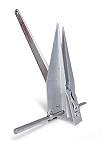
• Fluke anchors, like those made by Danforth and Fortress, offer the best weight-to-holding-power ratio. The fluke anchor lies flat in the sand and digs its blades in as the anchor line drags it across the bottom of the lake or bay.
Tip: Excellent for clay, sand and mud. Not as good on rocky or grassy bottoms.
• Plow anchors lie on their sides when first deployed, then turn upright, digging into the bottom when pressure is applied, ultimately burying the entire anchor securely. They handle changes in pull direction well.
Tip: Good in most bottoms except heavy grass or weeds that tend to resist penetration of the point of the blade.
• Grapnel anchors look like what you throw over the prison wall before climbing the rope to escape. That same solid grip on the wall translates to grip when anchoring where there are rocky and debris-strewn bottoms, wrecks and coral.
Tip: Please anchor in the sandy areas around coral (rather than on it) as that damages this living rock.
Keep in Mind... Two more things to remember when anchoring. First, chain must be used between the anchor line and the anchor to help keep the shank of the anchor parallel to the bottom and to prevent chafe on the rope. Second, twisted nylon makes the best anchor line thanks to its elasticity, which dissipates the shock loads encountered when anchored in rough water.
Reprinted from Boating Life, March, 2007.
Designer's Notebook: Center of Buoyancy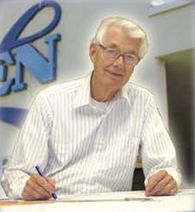
CB is the abbreviation for
"Center of Buoyancy" usually shown on the
designer's line drawings. The CB can be compared
to the fulcrum of an in-balance teeter-totter and,
in a boat, is the longitudinal balance point of the
underwater volume. Add weight aft of the CB and the
boat will go down at the stern, forward and it will
be down at the bow. |
Calendar
West Coast Rendezvous of Glen-L
Boatbuilders
May 4 @ Bethel Island, California

Penn Cove Water Festival
May 17 @ Coupeville, Washington
17th Annual Wooden Boat Show
June 27 - 29 @ Mystic Seaport, Connecticut
32nd Annual Lake Union Wooden Boat
Festival
July 4 - 6 @ Seattle, Washington
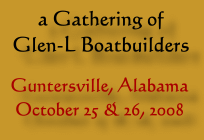
Port Townsend Wooden Boat Festival
September 5 - 7, @ Port Townsend, Washington
The Gathering of Glen-L
Boatbuilders
October 25 & 26 @ Lake Guntersville, Alabama
Bilge Pumps
B ilge pumps have a
purpose -ArtDeco |
Photos sent in since the last WebLetter... |
One Engine or Two?
Twin vs. Single Outboard motors?
This is an often asked question, usually in the context of
the idea that twin motors offer more power and dependability
than a single outboard motor. Research shows that twin
outboards generally produce about 85% of the power of a
single outboard of equal horsepower; more disappointing is
that they'll use about 15% more fuel to produce that
power than with a single motor of equal combined
horsepower.
Even more bad news; twin outboards nearly double the initial
cost, plus they require two of everything - tanks, batteries,
wiring, controls, etc.
The advantage of twin outboards, of course, is the safety in
having two motors in case one fails. Today's outboards,
however, are so dependable that this is not a serious factor.
Also consider the weight; a recent model 4-stroke 30-hp motor
weighs on average about 187+ lbs., or a total of 375 lbs. for
twins. The average weight of today's single 50-hp motor
is only about 220 lbs. and gives about the same power as the
twins and uses less fuel.

"What's the difference between an amateur boat builder and a professional? The professional knows what 'good enough' is ..." |
Shop Talk: The Kick-switch
|
figure A
figure B
figure C |
One of the tools featured in practically every episode of the DIY Network TV Show Wood Works is the table saw (figure A). This is the one tool that David Marks calls "the heart of the woodworking shop."
A significant safety modification that David added to his own table saw is the kick-switch (figure B).
The kick-switch enables the user to turn off the saw while
keeping both hands on the stock
(figure C) for a stable cut.
Click here to download a PDF file of
David's illustration showing the basic design for the
kick-switch shown in this episode.
Money-Saving Tip: Squeezing That Extra Bead Out of a Caulk Tube
Every time you toss out what seems
to be an empty tube of Polysulfide Sealant & Bedding
Compound (or just plain caulk) you're wasting money.
That's because the plunger on most caulking guns
doesn't extend all the way to the end of the tube. As a
result, a half-inch or so of sealant usually remains in the
tube.
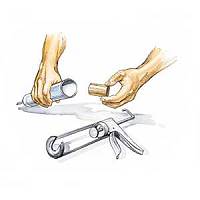 The next time you're at the
end of a tube of caulk or sealant, remove it from the
caulking gun and cut a 1¼-inch-diameter x 3-inch-long
section of dowel. Slip the wood dowel into the empty tube and
place the tube back onto the gun. As you squeeze the trigger,
the plunger will press against the dowel and dispense every
last bit of caulk. Remove and save the dowel before tossing
out the spent tube.
The next time you're at the
end of a tube of caulk or sealant, remove it from the
caulking gun and cut a 1¼-inch-diameter x 3-inch-long
section of dowel. Slip the wood dowel into the empty tube and
place the tube back onto the gun. As you squeeze the trigger,
the plunger will press against the dowel and dispense every
last bit of caulk. Remove and save the dowel before tossing
out the spent tube.
Innovative Products
Did you know there’s a device
that lets you carry a sheet of plywood with one hand?
Gorilla Gripper is a new gripping hand tool designed for
lifting, carrying and moving a variety of building materials
that are large, unwieldy and heavy… panels of plywood,
particle board, wallboard, melamine, glass, granite, marble
and more… all with surprising ease!
"Handles sheet goods from 3/8 inch to 1-1/8 inch thick"
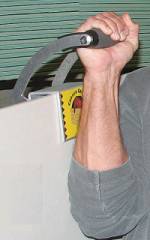
The Gorilla Gripper simply slips over the center of the
panel. When you lift, it grips using the weight of the
material to add super strength to your grip. You'll be
amazed at how easily you are able to lift the panel. The
leverage created by this tool makes it easy to carry these
panels from place to place with increased control and an
unobstructed field of vision, making these kinds of tasks
dramatically less difficult.
The Gorilla Gripper significantly reduces stress and
potential of injuries to your fingers, hands, wrists and
back. It also greatly reduces physical fatigue.
For more information go to GorillaGripper.com
Want a map of exactly where your
boating adventures have taken you?
The Super Trackstick is the perfect tool to record and view
on 3D maps the exact travel histories of anything that moves.

The Super Trackstick records its own location, time, date,
speed, heading, altitude and temperature at preset intervals.
With over 4Mb of memory, it can store months of travel
information.
How it works: The Super Trackstick receives signals
from twenty four satellites orbiting the earth. With this
information, the Super Trackstick can precisely calculate its
own position anywhere on the planet to within fifteen
meters.
Where it works: The Super Trackstick will work
anywhere on the planet Earth. Your exact location and the
route traveled can be viewed and played back directly within
Google™ Earth. Everything is included and there are no
monthly fees.
Applications / Features
- Seamless integration into Google™ Earth
-
- Professional GPS location recorder
-
- Weatherproof design
-
- 4-1/2” X 1-1/4” X 3/4”
-
- Boat/Vehicle location and route histories
-
- Boat and vehicle monitoring
-
- Mileage recording and verification
-
- Search and rescue
For more information go to Super Trackstick
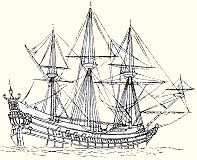
Recent email:
Subject: Web Letter #99 Viking Ships: The Drakkar
Date: 29 March 2008
As always, I enjoy reading the web letter when it arrives in
my in-box.
The black and white photo of a fine looking drakkar
immediately caught my eye since having recently finished
reading Erik Larson's "The Devil In the White
City", I recognized the building that appears in the
background of the photo. I am fairly certain that large
ostentatious looking building is none other than the
Manufacturers and Liberal Arts building constructed for the
1892 Columbian Exposition in Chicago, aka The Chicago
World's Fair. It was named the Columbian Exposition in
honor of the 400th anniversary of the Columbus
"discovery" of the New World.
All but one of the magnificent edifices built for the
Columbian Exposition were subsequently destroyed by fire. The
sole remaining building now houses Chicago's Museum of
Science and Industry.
The Fair had a number of notable water craft in attendance,
many of which were moored or anchored on adjacent Lake
Michigan. If you look closely you can make out what appears
to be the Stars and Stripes flying at the bow of that
drakkar. I believe the boat is floating in the Fair's
Grand Lagoon.
By the way, a young engineer, George Ferris, built his first
wheel at the Fair. It was taller than the Eiffel Tower in
Paris- a stated goal of the designer to out-do the French
engineer on his famous 1889 Exposition Universelle
tower.
-- Art Shand
(Building a Crackerbox)
Subject: Viking Boats
Date: 24 April 2008
I was interested to see you featuring viking boats in your
webletter. I actually rowed one of these once (as part of a
team!). There are longboat races every summer at Peel in the
Isle of Man where 4 of these are raced. They are heavy but
can get going with a good crew.
A longboat was built in 1979 and sailed from Norway to the
Isle of Man to replicate the original Viking travels;
apparently it was a pretty fair copy of the original type of
craft - apart from the diesel inboard they stuck in it!!
Odin's Raven (as it was named) can still be seen at the
Manx Museum in Peel. A link for a picture is http://www.gov.im/mnh/heritage/story/Image.gov?id=3911
Incidentally my Drifter is pretty much finished, just a
little finishing work to do; I'll email some pictures
when it is finished.
Kind regards,
-- Tim Kerruish
Subject: Squirt
Date: 1 April 2008
Hi- My son (Kyle) and I (Dan) started on the Squirt back in
November 2007. At first the project was overwhelming, but
with the help of the Boatbuilder Forum and a couple of books
and a few e-mails we are moving along. We have over 50 hours
in so far and have completed the transom, frames 1&2,
stem and breastplate, and the transom knee. Currently we are
working on the building form.
Our user name on the builder forum is Tbone. Kyle and I both
play the trombone, but that's another story.
We are planning on attending the West Coast Rendezvous this May.
Thanks to all who have helped and we will periodically
update the Project Registry.
-- Dan and Kyle
Subject: Living the Dream
Date: 2 April 2008
I am so happy to see that you are still in business and
selling the dream of wooden boat building. I would like to
tell you a little about my boat building because it has had
quite an effect on my life.
In 1972, when I was 14, I found a "BoatBuilding"
magazine in a book store with a MiniMax plan in it. I studied
the plans in that magazine for hours, and built the weekend
project in 14 very long days with a drill and a jig saw. I
had such a good time, I built another little boat from your
plans the next year, and then another the next year that was
a 10' two-seater. I was in that boat for hours every day.
Your design catalog was tattered from my studying all the
designs in it.
After receiving my college accounting degree, I opened a
woodworking shop with my only training being my boats that I
had built as a kid (I didn't get to go to shop class as I
went to Catholic schools forever). You may think this is odd,
but I figured if I could build a boat, I could build whatever
my customers wanted; I'm still in business.
In 1998, I was really missing building boats so I bought
your Outrage plan. I built it in 8 months, while still
building cabinets full time. It was a fun project and got
lots of use waterskiing with my children. I also built a Carl
Stambaugh designed Redwing 23' in 2004 and your Dyno Mite
in 2006 ( I should send you some pictures).
That's my story and that is why I am still glad that you
are selling plans....
Cheers,
-- Tim Wahl
Livonia, NY
Subject: Outrage Answers
Date: 3 April 2008
Tim, Thanks for your reply to my questions about your
Outrage. Your boat is the most beautiful I've seen in the
pictures. I am a semi-retired architect, but my part time
work is John's Custom Woodworking - mostly for the office
and friends. I've built a 18' sailboat, and two
copies of the TNT, all from Glen-L plans- and the plans are
great. I do hope the Outrage takes the rough water of the
Chesapeake Bay just a little better than the flat bottom of
the TNT.
I plan to use mahogany boards of the size you suggested for
the front deck and use mahogany plywood on the side decks. I
used mahogany plywood on the front deck of the TNT and it
turned out great (Check it out on the Glen-L picture
gallery)...
Again, thanks for the tips. By the way, my 3 kids used to be
tournament water skiers and I was a Promo Dealer for
Mastercraft for 15 years - we had 15 new boats. I was a
senior judge and driver, but building them is still more
fun.
-- John Wilmot
Edgewater, MD
Editor's Note: You can see pictures of Tim's Outrage and read his extremely helpful construction details (and what he would do differently the next time) that he shared with John here.
Subject: Monaco Plans
Date: 2 April 2008
I have registered onto your website, and read a number of
very interesting articles on the Monaco.
"Fantastic" is all I can say; I look forward to
future dealings with your company.
P.S I will be ordering a full set of plans online.
Thank you.
-- Tony Marks
Melbourne, Australia
Subject: Building 1/2 of a Riviera
Date: 3 April 2008
I am just starting on Riviera. Got the design and frame
patterns in Feb. I have some of the frames built and am
building the building jig. Actually I am not building all of
the Riviera....only half of it. I am building a bar for my
den.
I am making several alterations as I go to facilitate the
bar. However, this is also serving as a dry run for the real
thing. It is making me appreciate those who really build one
of your great designs.
I am having a great deal of fun with this project. I will
send photos when done.
-- Chuck Smith
Kingston,Tennessee
Subject: Row Me Update
Date: 31 March 2008
I have used my Row Me now for some months and I would like
to share a few updates...
First I have a few design changes I would make if I were to
build her again. I have not done these as I don’t
consider them to be major issues. First, I would build a
bench seat between the aft and middle seats. It would make it
easier to use the motor as the back seat really is not usable
for a fat guy to sit and operate the engine. I sit on my
cooler in the space between the aft and mid seats and it
works fine. Also some kind of spray rail would be nice if you
are taking it out in two foot chop.
I have used this boat for hunting with the following
results: With two people in the boat (one weighs 225 and the
other 285) a hundred pounds of food and equipment and we
managed 5 to 5½ mph going upstream in a local river
(dodging floating trees). Now add a 140 pound deer and we
made 7 mph going down stream. With that much weight in the
boat the boat seemed to draw less than six inches in the
water. We have made this same trip many times and it is easy
to scoot the boat up a little canal and tie her off to a
tree.
I took her on a hunt to one of the outside islands by myself
one morning. The water became extremely shallow (less than 8
inches) about 150 yards from shore. I broke out the oars and
quietly rowed into the beach and never hit bottom once.
I took her out this weekend into the bay. Conditions ranged
from smooth to a two foot chop. We trolled spoons along the
back of the barrier islands at 3 to 4 mph. Within two hours
we had landed ten fish. I ran the boat at ½ throttle
for 4 hours that day and burned almost 1/8th of a tank of
fuel (3 gal tank). The front seat I added came in handy for
my passenger to use and work the fishing poles.
This boat is well within the amateur's building ability.
Basically trace the pattern out on plywood and cut it
out.
Believe me, if I can build a boat, anyone can.
--Patrick Kinney
Tyndall AFB, FL
Teacher's Day...A TRUE Story!
I have a friend, and she's a school teacher, and at the
school where she teaches every year they have
"teachers' day" and when they have
"teachers' day" all the kids come and bring
teacher a gift.
Not long ago they're having teachers' day, she's
sitting at her desk, the kids are lined up in front to bring
her a gift and the first little boy, the teacher knew that
the first little boy in line, his daddy owned a candy
store.
So he sets the gift up on the desk, she unwraps the gift,
and inside the box there was a box of . . . candy.
The next little girl in line, she knew her daddy owned a
flower shop.
So she set her gift up, the teacher unwrapped it and inside
she found a box of . . . flowers.
At the next little boy in line, the teacher got kind of
excited, because the next little boy, she knew his daddy
owned the local liquor store.
So he set his gift up on the desk, and it had a little wet
spot on the side and she touched it and tasted it and said
"champagne?"
The little boy said "no, ma'am."
She said "brandy?"
He said "no, ma'am."
She touched the wet spot again and tasted it and said
"what is it?"
"A puppy," said the little boy.
GLEN-L boats, of course


 ;
;